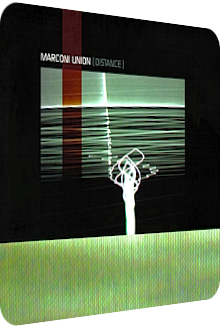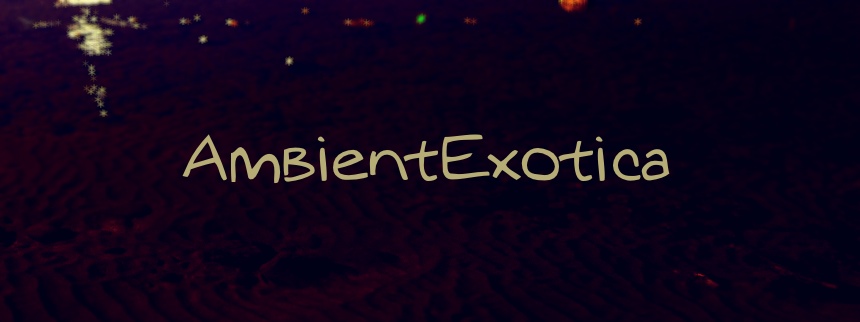
Marconi Union
Distance
2005
Distance is the second album by the British duo of Richard Talbot and Jamie Crossley, better known as Marconi Union and now building a trio with Duncan Meadows as the third member. Back in 2005 when Distance was released on All Saints Records, however, it is all about the vision of Talbot and Crossley. Seven deep, urban and nightly compositions are featured on the album, and it is basically this work on which the Marconi Union has found their voice or particular style, so to speak: creating the feeling of isolation and loneliness in post-modern megacities filled with millions of people. Despite the multiple layers, several guitar twangs and gentle beats, the band somehow manages time and again to let their compositions sound fragile and utterly melancholic. Soothing elements can be found aplenty, but there's never one moment where the mood shifts into brighter territory; all sources of brightness derive from neon lights and a blue-tinted iciness that is scattered throughout the album. The warmth of the guitars provides a great counterpoint, as do the mellow Dub basslines, and yet the feeling of a soul-searching process, of strangely forlorn corridors and buildings persists, further nurtured by the aural patterns. What sounds like a post-apocalyptic world isn't that horrifying, though. The duo creates eminently deep constructions, all of them polished and cleaned and not the least bit dirty or dusty as an apocalypse would suggest. So depending on the listener's viewpoint, these mentioned feelings can well be neglected or perceived in a different manner due to the ambiguous nature of Distance, of which I'm trying to uncover a few strata below.
Sleepless opens in an unexpectedly frosty manner, with blurry coruscating bells and their glacial sustain. In hindsight, this opening section is even more remarkable, for the complete work by the Marconi Union is most often about intimacy, isolation and a microscopic glimpse onto something, but never before or ever since has a track launched in such a fragile and cold way; and it won't be the last endemic example in this regard. A bold element of warmth is soon interwoven in the form of floating electric piano pads, and it is this very synth setting that completely replaces the vibraphone-esque bells and becomes itself accompanied by liquid pulses, crackling wind gusts and gently plinking molecular twinkles. The setting is utterly melancholic, traversed by steel guitars and accentuated with fizzling clicks, evoking the aforementioned dusky style of the British duo. Even though it isn't expected at the beginning, the structure turns from a texture-driven atmosphere to a catchy melody-fueled Ambient setting sans beats. A most splendid beginning. The following These European Cities launches in the most spacey fashion, with piercing galactic sine waves and electric piano accents, clinging bells and wonderful synth washes that swell and fall down in juxtaposition to dreamy steel guitar chords. After around three minutes, an eclectic downbeat pattern is introduced, its short abyssal bursts forming a great counterpoint to the warm synthscape without distracting from the nocturnal mood. The warmth of the synth washes is yet again carrying the whole track, and there is no room for the sustain to echo in the distance. Up next is Through Glass, and by now the listener should have adjusted to the murky mood. The trembling elasticity of a spectral synth swirl marks the beginning of the track and is enhanced by gurgling, liquedous cuts and echoey snares. Even after the injection of a dubby 4/4 beat skeleton and an electric backing guitar, the arrangement is held together by the synth swirls, and the closer the listener pays attention, the eerier and more crestfallen the aura of the track becomes. The club-compatible beat adds a certain liveliness and the concept of movement, but since it is deeply embedded in the nightly panorama, Through Glass remains a proper Ambient track.
Buildings And People depends on a nostalgic sepia-tinted bonfire guitar layer that sounds almost clichéd, but is thankfully rescued by the pulsating laser swirls, whirring winds, dubby bass melody and the plasticity of the bleepy snares. An ethereal phase of rapture is later reached as celestial synth breezes float phantasmagorically through the air. The nostalgic guitar base frame is still on the forefront, but has been stripped off its nostalgia due to the various encapsulating layers. It has now become a slightly more bustling track, and though this pinch of vividness is hardly perceptible, it allows Buildings And People to change its characteristic trait, reaching faintly brighter and contentment-filled regions. Suburb27 is a treat for Dark Ambient fans and another strong composition of the duo, launching with terrifically – or terribly – glacial synth howls of the threatening kind before warmer guitar layers are placed in front of the downwards spiraling maelstrom. Dubby basslines and Trance-like pads round off this track that boosts the loneliness to the maximum. A further interesting aural aspect consists of the accompanying clicks, as an echo is placed on some of them; this enhances the aspect of isolation and paints a larger room that wasn't perceived before due to the thick walls of sound. While the crystalline frostiness of the Dub Techno-inspired Inter comprises of threnodic prolongated bells, opera singer-like train brake-evoking ghost strings, underlining guitar licks and revved up shakers near the end that expand the tension in an otherwise narcotic diorama, the final A Temporary Life closes the album with vinyl pops, a sunset-red five-note guitar motif, blue-colored and gleaming electric pianos that are usually at home in Funk and Fusion tracks, and a tremendously smooth saxophone melody played by Marko Lamberg. The sax meshes so well with the glistening atmosphere that Marconi Union create a possibly unintended addendum to the Blade Runner soundtrack or another science fiction-related film noir.
Distance is both an appropriate and falsifiable album title. It seems as if Richard Talbot and Jamie Crossley perceive the depicted buildings and architectural prowess from the titular distance, completely isolated and all by themselves which is emphasized by the atypically gelid fragility: it launches the majority of the tracks. Then again is the sound carpet resplendent, luxurious and opulent, with less alcoves and niches than, say, their album Tokyo of 2009. So even if you detach the album title and just listen to the seven tracks, an oxymoronic cold warmth is noticeable, a shared feeling of loneliness. The basslines are of particular importance as well, especially so since they are deeply embedded in the mix; neither are they on the forefront, nor do they destroy the chilling synth waves and scattered guitar layers. Pinpointing a standout track is hard to achieve, but the obvious choice would be the closing film noir track A Temporary Life due to its textural change in form of Marko Lamberg's saxophone, and possibly Suburb27 because of its Dark Ambient attributes. Distance is another one of Marconi Union's dark but illuminated urban sceneries, highly electronic despite its guitar melodies and deeply tranquilizing. The depicted atmosphere is maintained throughout the album, and that's the reason for the difficulty in choosing the best song out of the septet. A strong album dedicated to the depiction of isolation in megacities, nocturnal strolls in neon lights and the close observation of distant concrete jungle erections from a point of shelter.
Further reading:
The band's Twitter account is @MarconiUnion.
Ambient Review 142: Marconi Union – Distance (2005). Originally published on Nov. 7, 2012 at AmbientExotica.com.
